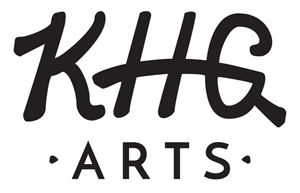
If you’re new (or even not so new-ish) to the world of hand embroidery and needlework, the variety of threads for stitching can seem overwhelming…so many decisions, so many colors and fibers and weights and textures, O MY. I thought it’d be helpful to break down the basics here, because overwhelming can also mean unending choices to experiment with!
There are actually hundreds of characteristics for all types of thread (crazy, right?), from the manufacturing process to at home uses, so I’ve condensed the most fundamental facts into two posts—below you’ll find an approachable guide to understanding basic terms you’ll see when you go to buy your threads. In Part II, we’ll take a deeper dive and look at several varieties, what makes each one special for particular applications, and where to find them.
Are you ready? Let’s do this!

Divisible vs Non-divisible
Divisible threads, like 6-ply embroidery floss are just that—the individual strands, or plies, can be separated so that you can choose between using a thinner or thicker piece to achieve varied effects (think about less strands for pushing elements into the background of an embroidered image and thicker strands for the foreground). Perle cotton is a prime example of a non-divisible thread that has many uses including “big stitch” hand quilting and embroidery. Be aware though—it’s non-divisible structure makes it less than ideal for split stitches where the needle needs to break through the fibers.
Gassed/Gazed
This is a manufacturing term that refers to the process of passing spun cotton fibers through a flame (at very high speed) in order to burn off the fuzziest bits, making for a smoother strand that attracts less lint and static. If you look on the spool and see the term “silk finish” or “polished cotton,” this means it has been gassed, and not that there is any silk content. Kinda cool, huh?!
Glazed
You’ll find cotton sewing threads intended for hand quilting bearing the term “glazed” or “coated.” It means that the spun fibers have been treated with a coating of industrial wax, resin, or starch that gives the thread a sturdier, smoother feel, making for strong stitches while still being easy on the wrist during extended stitching.
Memory
Does thread have a memory? Indeed it does! Do you have some wool, cotton, or linen fabric, yarn, or thread in your stash? Try holding each and pinching the strand or fabric. Linen, and some cottons, will retain the pinch mark or wrinkle and this factor is known as the fiber’s memory. Wool, having a greater amount of twisted spring to its structure, will bounce back much more easily, so we can say it has less memory.
Mercerized
Mercerisation (named for James Mercer who is credited with developing the process in England, 1844) is a way of treating threads with an alkali solution. The fibers are then better able to absorb dye and water which means they are brighter and more resistant to washing over time. It also gives them a smooth and lustrous finish that tends to resist lint and mildew more than unmercerized threads. Most sewing thread is mercerized whether the label says so or not.
Tensile strength
This word can be used to describe the tendency of any material to break under tension. New threads will have a greater tensile strength than old ones, which break down as they age/are exposed to the damaging effects of sunlight.
Thread vs Floss vs Yarn
These terms can often be used in subjective, overlapping ways. Essentially, yarn is any natural or man-made fiber that’s been spun into a long and continuous strand that can be used in a variety of textile and needlework production. Thread and floss are, technically, simply types of yarn that are specifically intended for sewing and embroidery, respectively.
Twist
As fibers are manipulated into yarn and thread, they can be twisted to different degrees. Thread that is too heavily twisted will loop back on itself and make for a headache inducing snarl. Threads with too little twist will easily fray and disintegrate under pressure. Depending on the manufacturing process, fibers can have an “S twist,” which means they entwine in a right-facing or clockwise direction, or a “Z twist,” that entwines in a left-facing or counter-clockwise direction. It can be helpful to observe which way a yarn or thread twists when attempting to untangle it!
Variegated vs Speckled vs Tonal
You will most often see the word “variegated” when looking at embroidery floss and sometimes modern knitting/crochet yarns. It means that any given individual skein or hank has multiple colors in it, one blending into another along the length of the strand. Variegated threads can contain many different colors or flow from one tone to the next. In this way, variegated threads can be tonal in nature, but don’t have to be. Speckles, which are a popular and newer method for applying color to yarns for domestic knitting, are scattered across the surface of the fibers in a completely random array.
Weight
If you’re talking about yarn for needlepoint, tapestry, knitting, or crochet, you’ll need to know the different weights, or thicknesses, that yarn comes in. From thinnest to thickest, here are the categories: lace, fingering, sport, DK, worsted, aran, bulky, and super bulky (or chunky).
Got any other terms you’re curious about or stumped on? Let me know in the comments, and we’ll do some sleuthing! Stay tuned, part two is on it’s way…

Leave a Reply